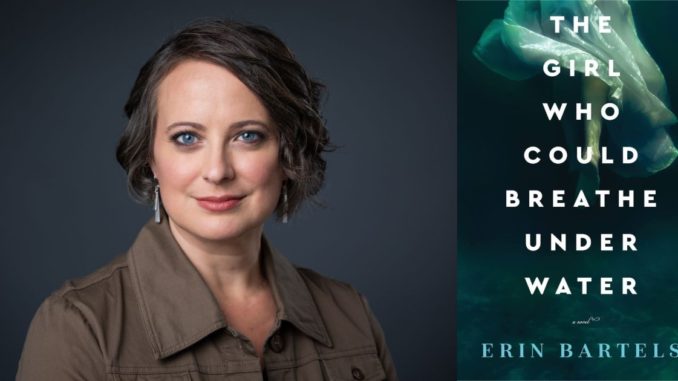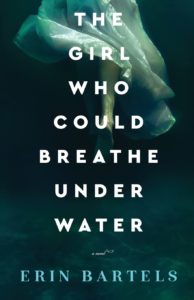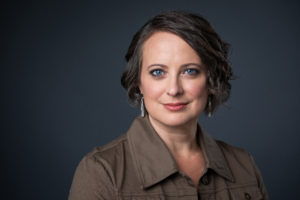
Podcast: Play in new window | Download
Subscribe: Apple Podcasts | RSS
With the opening lines of The Girl Who Could Breathe Under Water, I knew it was a book I needed to read in one sitting. It’s themes of how story shapes us, and how we tell and remember our own stories—along with the power of fiction—is all at the heart of why this website is called Life is Story. It’s a beautiful, intimate novel of trauma and healing, friendship and loss. I was so thankful to have Erin on the podcast program to talk with me about the book.
The Conversation | Erin Bartels
This excerpt has been lightly edited for conciseness and clarity. Listen to the full interview in the player above or wherever you get your podcasts.
Josh Olds: Let’s get started with the elevator pitch for The Girl Who Could Breathe Under Water.
Erin Bartels: Everybody always wants that and I’m always a little stumbling over it. So this book is the story of a woman named Kendra Brennan, who has spent a lot of time, every summer of her childhood, actually, on a lake with her grandfather in his cabin, and now that he’s passed on the cabin has gone to her. And she’s going to be going back up to that lake. She’s an author who wrote her first book that was quite successful, but she got a letter from a very disappointed reader, an anonymous one, who accused her of getting the story wrong. This reader clearly realized that it was based on some real-life things that happened to her. And the reader accuses her of getting things wrong, of taking the wrong person’s side in the story, and abusing people.
And this letter has Kendra so tied up inside wondering, did she get the story wrong? Can she trust her memory of those events? She’s so stuck she can’t write her next book, which is contracted and she has a deadline. And so she’s decided she’s going back up to this lake and she’s going to be living there in that cabin that she now has, and she’s going to try to figure out who’s right, who’s wrong, and finish her book up there. But what she finds is that the truth is more complex than she might have realized—in the way that a lot of things that we go through as children, when we become adults, we realize there were there were other factors involved. I recently realized that this is kind of like when you when you hear a song, and you know a song as a child, and then you become an adult, and you realize, oh, I’ve been singing this wrong the entire time, I’ve gotten the lyrics wrong. And I think we’ve all had that experience of just figuring out, I don’t have it quite right. And so that’s kind of what the book is about. Kendra’s going to be confronting the person she based her antagonist on, she’s going to be visiting with her mentor, a writer who lives on the lake, and she’s going to be dealing with family things, and all sorts of stuff like that. And she’s going to have an unexpected guest, which is always fun.
Josh Olds: There are some stories that come fully fleshed, while some stories start with the first line. The first line of this book is so good. Did the writing start with that line for you?
Erin Bartels: Actually, no, it didn’t because the book was not originally written in that format. The first time I attempted to write The Girl Who Could Breathe Under Water, it was in third person. And it wasn’t until I switched to first person and then also decided that the first-person narrator would be addressing another character in the story that that line really came together. And I think that once I had that format, that everything fell into place, and it did feel fully formed.
Josh Olds: That’s interesting, because it really—it would be such a different story if it was third person. Because a lot of the hook, for me, was the way in which you used the literary style to mirror a lot of what the book was talking about dramatically. So like, right here in this first sentence—and you wouldn’t have this if it was if it was written in third person—you have this immediate mystery. Who is this “you” that that she’s writing to? And this is something that you persist with throughout the entire book. So now, knowing that you originally wrote it in third person that went back and rewrote it, I really have to commend you and your editors for being able to do that. I feel like if I was writing a story like that, I would either forget to reference it or I would use it way too often.
Erin Bartels: Yeah, there was a balance to strike.
Josh Olds: How do you feel like you found that balance?
Erin Bartels: Well, I guess…I guess I don’t know if I really thought that deeply about it. And I think because when we go through experiences in our lives with people who make a real big impact in our lives, whether it’s, you know, a childhood best friend, or a teacher, or a parent or somebody, they’re kind of always in your head in some way, even if you haven’t seen them in a long time. And so it felt like talking to, you know, just talking to the friend that you hadn’t talked to in a while, but it’s one of those friends that you can just pick up with, where you left off, and you don’t have to explain things.
The Book | The Girl Who Could Breathe Under Water
 The best fiction simply tells the truth.
The best fiction simply tells the truth.
But the truth is never simple.
When novelist Kendra Brennan moves into her grandfather’s old cabin on Hidden Lake, she has a problem and a plan. The problem? An inflammatory letter from A Very Disappointed Reader. The plan? To confront Tyler, her childhood best friend’s brother–and the man who inspired the antagonist in her first book. If she can prove that she told the truth about what happened during those long-ago summers, perhaps she can put the letter’s claims to rest and meet the swiftly approaching deadline for her next book.
But what she discovers as she delves into the murky past is not what she expected. While facing Tyler isn’t easy, facing the consequences of her failed friendship with his sister, Cami, may be the hardest thing she’s ever had to do.
Plumb the depths of the human heart with this emotional exploration of how a friendship dies, how we can face the unforgivable, and how even those who have been hurt can learn to love with abandon.
The Author | Erin Bartels
 ERIN BARTELS is the award-winning author of We Hope for Better Things, The Words between Us, All That We Carried, and The Girl Who Could Breathe Under Water. Her short story “This Elegant Ruin” was a finalist in The Saturday Evening Post 2014 Great American Fiction Contest and her poetry has been published by The Lyric. She lives in the capital city of a state that is 40% water, nestled somewhere between angry protesters on the Capitol lawn and couch-burning frat boys at Michigan State University. And yet, she claims it is really quite peaceful.
ERIN BARTELS is the award-winning author of We Hope for Better Things, The Words between Us, All That We Carried, and The Girl Who Could Breathe Under Water. Her short story “This Elegant Ruin” was a finalist in The Saturday Evening Post 2014 Great American Fiction Contest and her poetry has been published by The Lyric. She lives in the capital city of a state that is 40% water, nestled somewhere between angry protesters on the Capitol lawn and couch-burning frat boys at Michigan State University. And yet, she claims it is really quite peaceful.
Find her on Facebook @ErinBartelsAuthor and on Instagram @erinbartelswrites.
